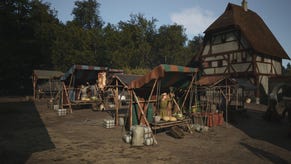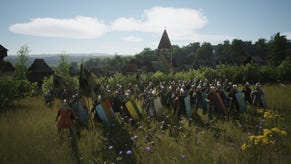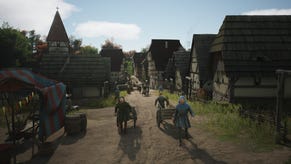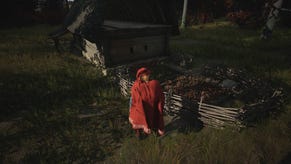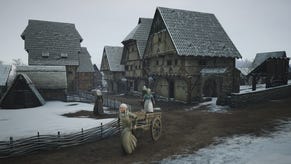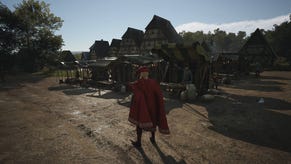Manor Lords wealth explained: how to get more money and Regional Wealth
Learn how to get rich quick by collecting taxes, trading and more.
Looking for an explainer on Manor Lords wealth? If you’re the ruler of a medieval land, one thing you’re going to want is sacks of money. Thankfully, in Manor Lords there are multiple ways to earn Regional Wealth, ranging from trade to passive income from Burgage Plots.
There are, however, some nuances to the way money and wealth works in Manor Lords - with taxes required to convert Regional Wealth into personal Treasury savings. If you need tips on how to get more Regional Wealth in Manor Lords, read below for our walkthrough, which will quickly get you earning the big bucks.
On this page:
- Manor Lords wealth explained: Regional Wealth vs Treasury
- How to get Regional Wealth through Burgage Plots
- How to get Regional Wealth through trade
- How to convert Regional Wealth to Treasury through Taxes
Manor Lords wealth explained: Regional Wealth vs Treasury
There are two main types of wealth or money in Manor Lords:
- Regional Wealth
- Treasury
Your Regional Wealth is the money produced by your region’s civilian population. This is generated by your Burgage Plots, along with any goods you export by trading using your Trading Post. You can spend Regional Wealth on further upgrades to your Burgage Plots (such as Goats or Chickens), or on importing resources.
Your Treasury, meanwhile, is your personal wealth and earned via your Manor. This money is used to hire retinue and mercenaries, and pay for settling in a new region. You can convert Regional Wealth into funds for your personal Treasury through Taxes.
You can also earn both Regional Wealth and Treasury funds by clearing out Bandit Camps. After marching a military unit to a Bandit Camp, you will be presented with a message that allows you to choose where to send the spoils. Picking the ‘nearest town’ option will give you Regional Wealth, while ‘personal treasury’ will send funds to your Treasury.

How to get Regional Wealth through Burgage Plots
One of the easiest ways to earn Regional Wealth in Manor Lords is to level up your Burgage Plots. These will passively earn you income each month, with each upgrade level earning you slightly more money:
- Level 2 Burgage Plot: 1 Regional Wealth per family per month
- Level 3 Burgage Plot: 2 Regional Wealth per family per month
If you expand the living space in a Burgage Plot, this will add an additional family to the plot, and increase the amount you earn from the building.

How to get Regional Wealth through trade
Each Manor Lords region comes with strengths and weaknesses: some may be perfect for farming, while others will have rich deposits of ore. For your region to flourish, you will almost certainly need to engage in trade to sell surplus goods and solve your resource shortages. Selling off goods at the Trading Post will earn you Regional Wealth that can be spent on Burgage Plot upgrades or importing other resources.
Once you know how to trade, some of the best materials to export early on are:
- Firewood
- Planks
- Honey
- Rooftiles
In the early game, one of the best ways to earn Regional Wealth is by exporting Firewood. This is an easy resource to acquire, and if you plant trees near your Woodcutter’s Lodge, you should be able to quickly produce large amounts of it. To do this, click on your Forester’s Hut and enter the advanced menu, where there will be an option to limit the work area to a small circle. Place this near the Woodcutter’s Lodge, and trees will be grown in that area.
Similarly, producing a large amount of Planks is easy in the early game, as this only requires a steady supply of trees, a Logging Camp, and a Sawpit. Again, make sure that you place all your timber-related buildings in a close area, as this will speed up productivity.
If you have the Beekeeping upgrade unlocked in the development point menu, you can also build Apiaries to produce large amounts of Honey. Ensure that you have enough to sustain your population through the winter, then sell off any excess.
You can also produce Rooftiles with relative ease and sell these for a decent profit. There are relatively few steps required to make this resource, with only a Mining Pit and Clay Furnace needed to collect Clay and convert it into Rooftiles. You will, however, have to stump up for a significant one-time fee of Regional Wealth in order to open a Rooftiles trade route. Prices will fluctuate over time, but in our playthrough, it cost us 192 Regional Wealth, so watch out for steep price hikes!
One way around the high trade route costs is to unlock the Trade Logistics upgrade in the development tree. This will drastically reduce the cost of opening new trade routes, capping the price at 25 Regional Wealth per route. Considering how much some routes cost to open, this is a great way to save money in the long run.

Once you are more established, you can export more sophisticated products such as clothing and weapons to earn higher returns. Our favourites include:
- Shoes - you can passively earn Hides by adding Goat Sheds to your Burgage Plots, then turn them into Shoes at the Cobbler's Shop.
- Warbows - these can be made relatively quickly at a Fletcher’s Shop plot extension using Planks.
Finally, ensure that you have plenty of workers assigned to the Trading Post and your Storehouse, as this will allow for a faster flow of goods.
Convert Regional Wealth to Treasury through Taxes
When your community has reached the settlement level of Small Village (Level 2), you will be able to place an administrative building called a Manor. Aside from looking impressive, you can use this building to set monthly taxation options and convert your citizens’ Regional Wealth into funds for your personal Treasury.
The key option here is Land Tax, which will convert a percentage of your Regional Wealth into Treasury funds. You can adjust this amount from 10 per cent all the way up to 100 - but be careful: any form of taxation will cause approval loss. Understandable, really.
Significant approval loss will lead to worse morale for your armies, and lower population growth. We've found that keeping your taxes at around 10-20 per cent will help avoid these issues.
Once you have funds in your Treasury, you can use this money to hire Mercenaries to help fight your battles, or increase the size of your Retinue - an elite fighting force that is unlocked when you place the Manor. You can also use this money to settle in new regions at a cost of 250 Treasury coins per camp - providing you also have enough influence to claim a territory.

The key to making money in Manor Lords is in carefully assessing your region’s strengths, and figuring out where you could turn a profit from excess resources. This is likely to vary from playthrough to playthrough, so it’s best to experiment and keep your mind open to different entrepreneurial ideas. It also never hurts to take a militant approach by clearing out some bandit camps at the start, which will give you a healthy influx of money. After all: if you don’t take from them, they’ll end up taking from you!
That wraps up our guide on Manor Lords wealth and how to get more of it. For more assistance getting up and running in Manor Lords, read our beginner's tips and tricks guide on what to do first, our picks for the best development points to unlock early, as well as our in-depth explainers on trading, how to get food, and how to make clothes to turn your village into a thriving medieval town.


